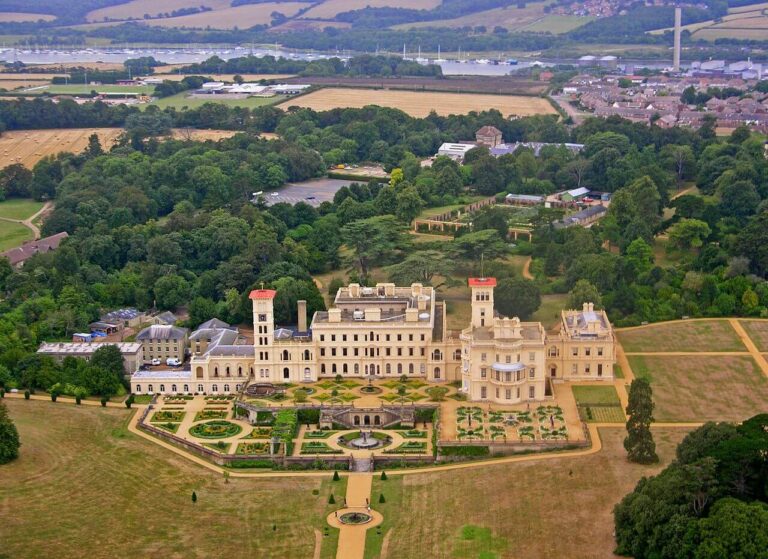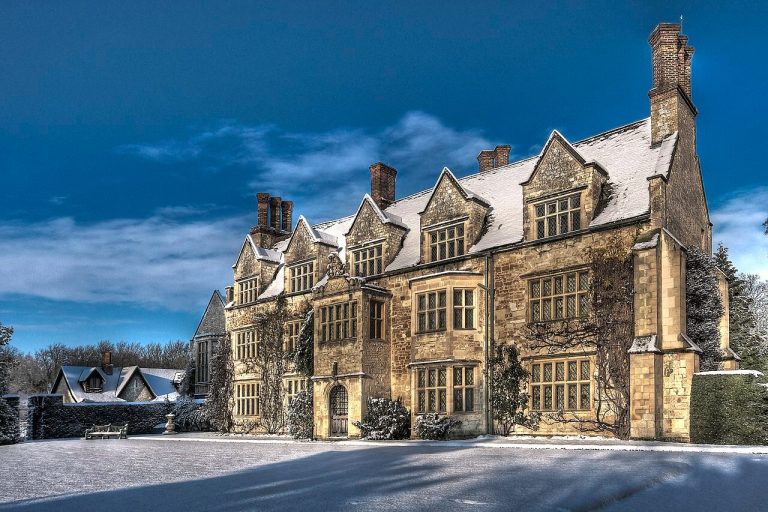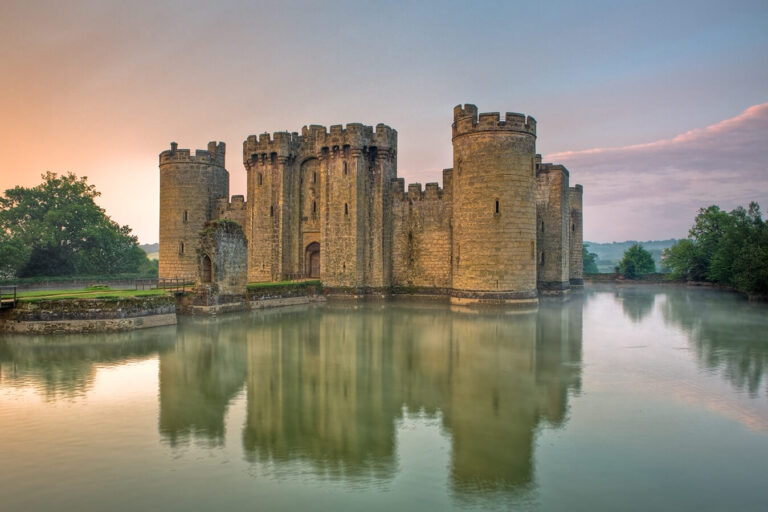20 Castles & Stately Homes Near Manchester
Manchester is the fifth largest city in the Northwest of England. And of course you can find many beautiful, interesting and architectural stately homes near Manchester.
Around the turn of the 19th century, Manchester grew into a wealthy and large city due to the industralization. And thereby Manchester became the world’s first industrialised city.
And when there’s wealth, there are large stately homes. You can find a variation of manor houses, grand estates and country homes near Manchester. Ranging from Medieval times to Victorian. Take a look at the list of 20 stately homes near Manchester below.
Lyme Park

Lyme Park is a 16th century stately home with modifications made in the 18th century by Giacomo Leoni and Lewis Wyatt in the 19th century. Therefor the stately home is now a combination of Elizabethan, Palladian and Baroque architecture. Surrounding the house are formal garden layed out in the 19th and 20th century.
The estate is also used as a filming location. Lyme Park is perhaps best known as Pemberley in the BBC adaptation of Pride & Prejudice.
Address: Disley, Stockport, Cheshire
Ordsall Hall

In the historic parish Ordsall, you will find the manor house Ordsall Hall. The history of the hall goes back 750 years, though the oldest part of the current house dates back to the 15th century.
The manor house was the home of the Radclyffe family, who lived here for 300 years. In later years the Hall has been used as working men’s club, a school for the clergy and a radio station. But today you can visit the house and learn about its rich history and its inhabitants.
Fun fact: Ordsall Hall was the setting for the 1842 novel Guy Fawkes by William Harrison Ainsworth.
Address: 322 Ordsall Lane, Salford
Dunham Massey

This early 17th century stately home was built by the Earls of Warrington in the Trafford district. Two ancient families have lived at Dunham Massey Hall: The Booth family (Earls of Warrington) and the Greys (Earls of Stamford).
The house was modified in the early 20th century on the outside and the inside. And during the First World War Dunham Massey was turned into the Stamford Military Hospital. One of the daughters of the house (Lady Jane Grey) trained as a nurse here.
The house contains one of the largest collections of Huguenot silver, which was collected by the 2nd Earl of Warrington. Surrounding the house is a large deer park, as well as formal gardens.
Address: Charcoal Road, Dunham Massey, Altrincham
Adlington Hall & Gardens
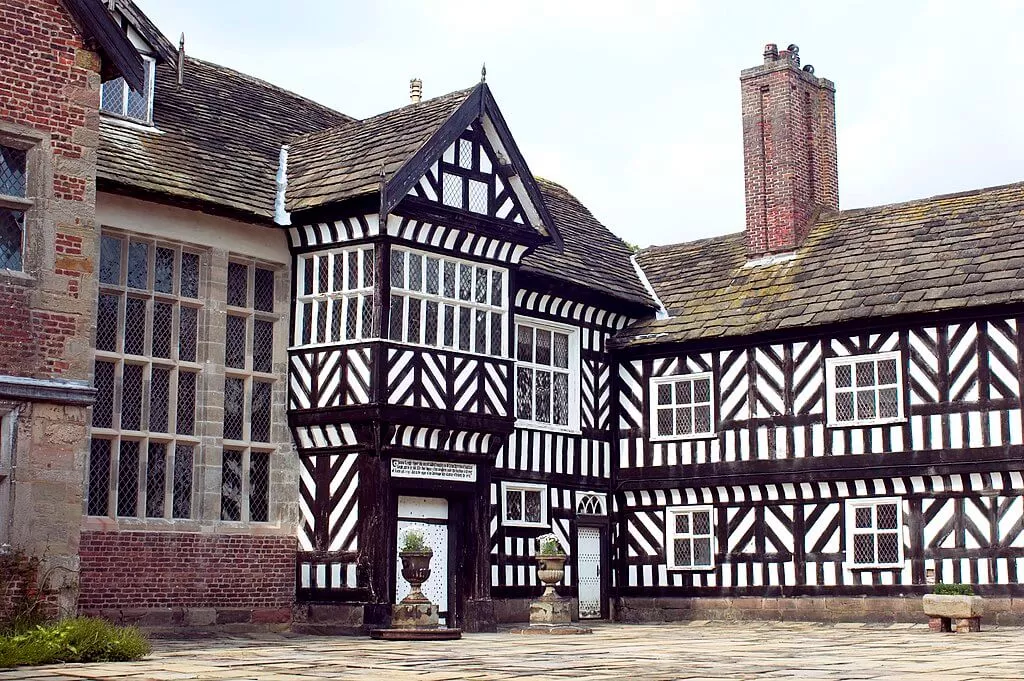
Adlington Hall is a country house near Adlington anf the family estate of the Legh family since the 14th century. The oldest part of te current house (the Medieval Hall) dates back to the 15th century, though major changes were made in the 18th and 20th century.
Due to its many changes the house contains several architecture & interior styles. Ranging from the Medieval period to Classical and Rococo styles in the interiors of the new wings. Surrounding the house are beautiful layed out gardens.
Fun fact: The Great Hall has an organ which composer George Frideric Handel (a friend of the Legh family) played in 1741 or 1742.
Address: Adlington Hall and Gardens, Mill Lane, Adlington
Gawthorpe Hall
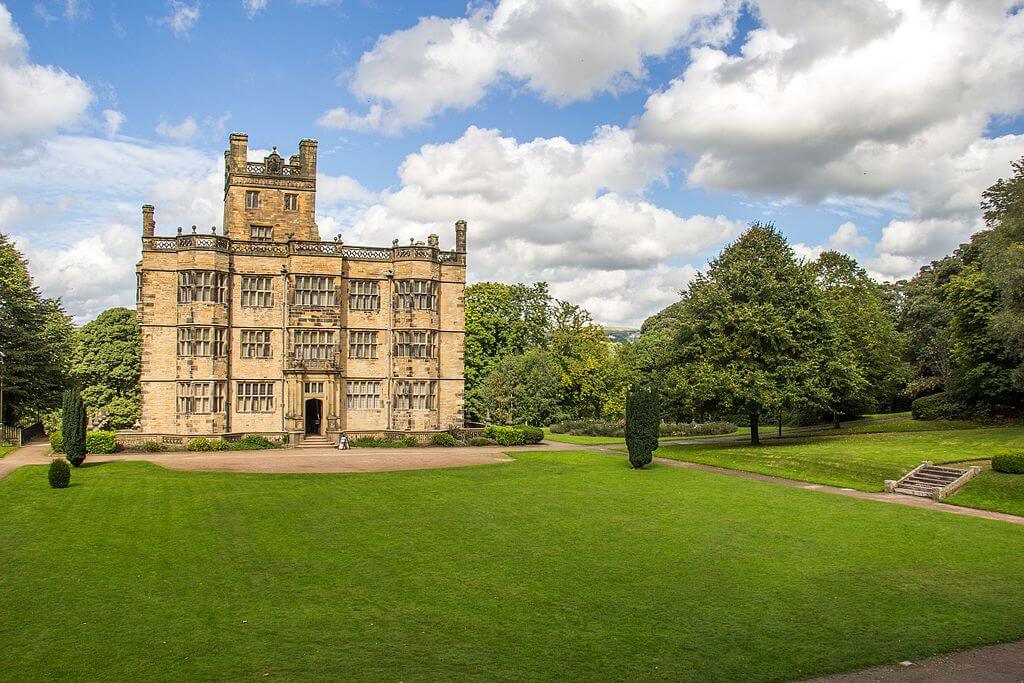
Gawthorpe Hall is an Elizabethan country house which is also referred to as “Downton of the North”. This refers to the popular television series Downton Abbey which was filmed at Highclere Castle. Architect Sir Charles Barry who redesigned Highclere Castle also redesigned Gawthorpe Hall.
At the house you will find the Gawthorpe Textile Collection. Which showcases intricate needlework, lace, and costumes amassed by Rachel Kay Shuttleworth. As well as contemporary pieces from talented artists across the region.
Gawthorpe is one of the trailheads of the Brontë Way: a long-distance footpath that links places that have strong associations with the writings of the Brontë family.
Address: Burnley Rd, Padiham, Burnley BB12 8UA
Bramall Hall
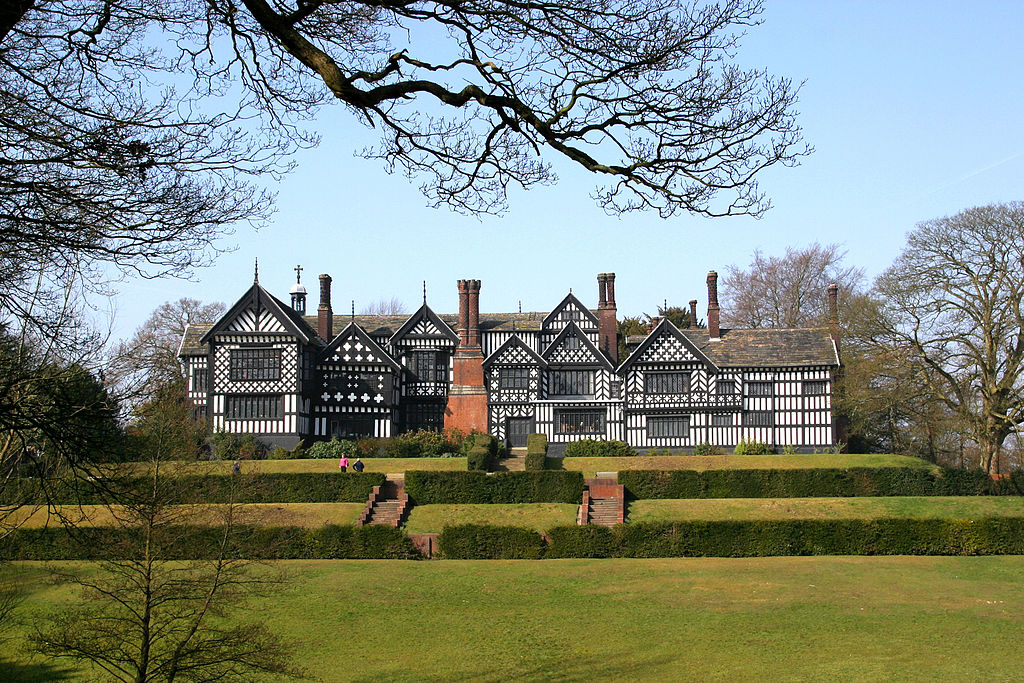
The timber framed Tudor manor house is located in the Stockport. The oldest part of the manor house date back to the 14th century. In the 16th and 19th century new additions were added to the Tudor house. Bramall Hall has 16th century wall paintings, Elizabethan plaster ceiling, Victorian kitchens and Servants’ Quarters.
The hall is now a historic house museum showing more of the families and servants who lived and worked here. The surrounding parkland is designed in romantic Victorian style.
Abney Hall Park

“One of the most princely mansions in the neighbourhood”. – Prince Albert in 1857
This Victorian house in Cheadle, Greater Manchester has a famous literary connection. The last private owner of Abney Hall was James Watts, the nephew of Agatha Christie. Agatha Christie often visited the house and wrote two stories at Abney Hall: “After the Funeral” and “The Adventure of the Christmas Pudding”.
The Hall also features in two of her novels: “The Secret of Chimneys” and “The Seven Dials Mysterie”. Writer E.M Forster also visited Abney Hall.
Click here for more famous writers’ houses in England
The Hall is uses as offices (but open during Heritage Open Days). The grounds are always open for visitors
Address: Abney Hall Park, Manchester Road, Cheadle
Tatton Hall
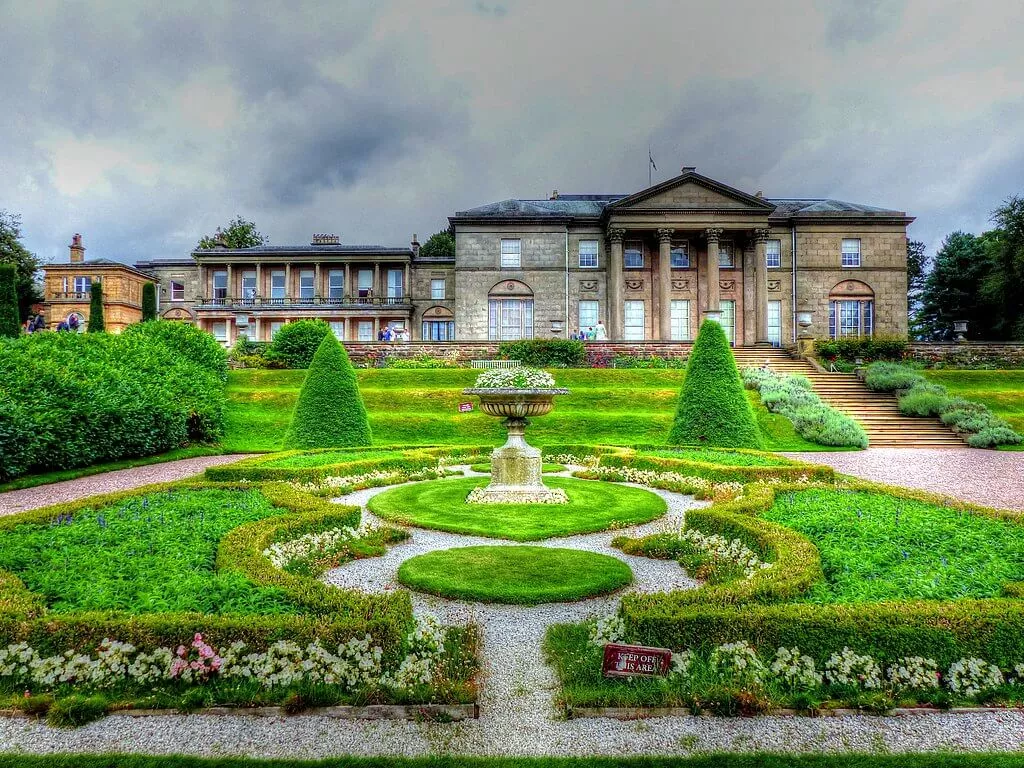
Tatton Hall is an 18th century Neoclassical country estate in Tatton Park near Knutsford. It was the home of the Egerton family for many centuries and the house includes an important collection of paintings and books.
At Tatton Hall you can find a rare Salviati portrait on display. The art experts from BBC’s Britain’s Lost Masterpiece identified one of Tatton Park’s paintings as a unique work by renaissance artist, Francesco Salviati.
Surrounding the house are 50 acres of landscaped gardens. Including a Japanese garden, a Walled Kitchen Garden, and Pleasure Grounds.
Address: Tatton Park, Knutsford WA16 6SG
Arley Hall & Gardens
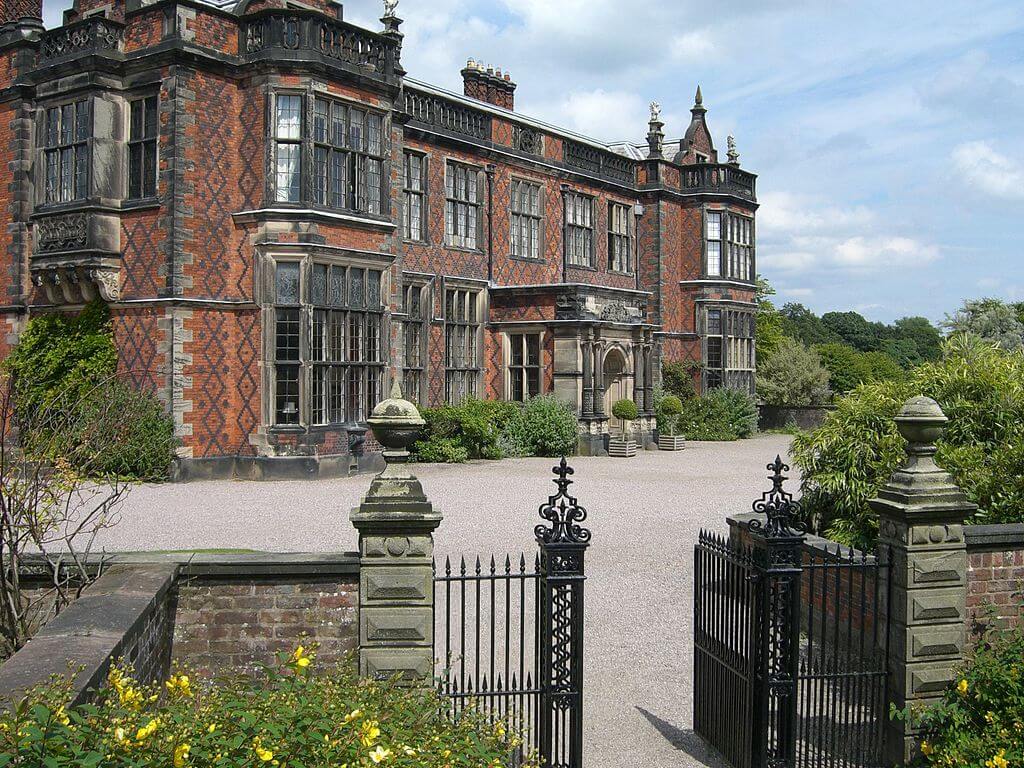
Arley Hall is a 19th century country house and home to the Viscount Ashbrook and his family. The house was built for landowner and poet Rowland Egerton-Wharburton in Jacobethan style (which was inspired by Elizabethan architeture). Next to the house stands a Gothic Revival chapel designed by Anthony Salvin.
The gardens are one of the finest in Britain. And it has England’s first garden with a Herbaceous Border.
Arley Hall is also used as a filming location. It appeared in Peaky Blinders, The Adventures of Sherlock Holmes and the Forsyte Saga.
Address: Arley, Northwich CW9 6NA
Peover Hall
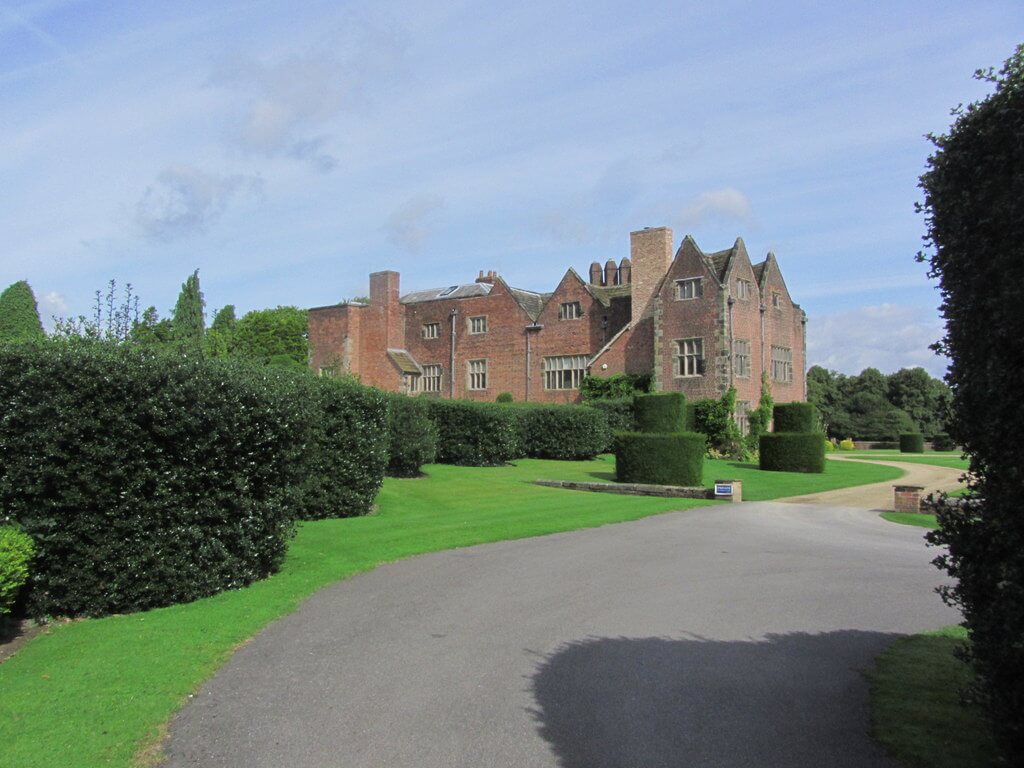
Peover Hall is an Elizabethan manor house which is still used as a family house today. The house was built in 1585 for Sir Ralph Mainwaring and in the 18th century a new wing was added.
During the Second World War the house was requisitioned as the HQ for General George Patton of the United States 3rd Army to train for the D-Day landings in 1944. During these years it was also a prisoner of war camp.
The Hall is also used as a filming location, including the BBC drama series Peaky Blinders.
Address: Peover Hall, Over Peover, Knutsford, Cheshire, England, WA16 9HW
Capesthorne Hall
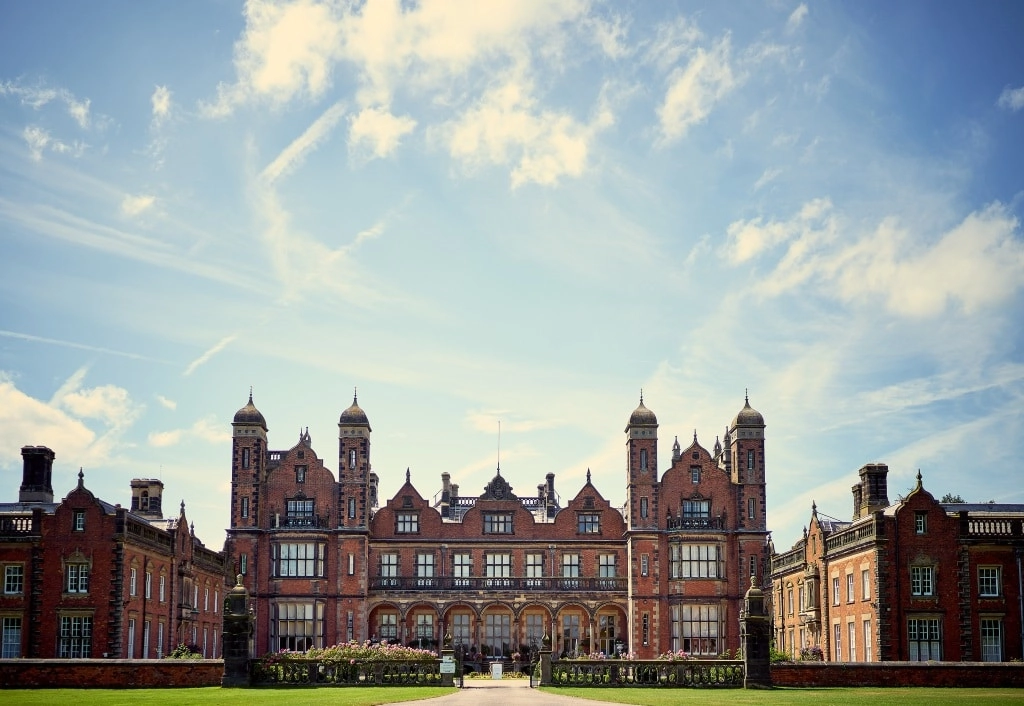
Capesthorne Hall is a Jacobean-style country house near Siddington. The 18th century country house was first built in Neoclassical style but a remodelled in 1830 by Edward Blore into Jacobean style.
The house is privately owned by the Bromley-Davenport family, who have opened up the house for visitors and events in the 1950s.
Address: Congleton Rd, Siddington,
Little Moreton Hall
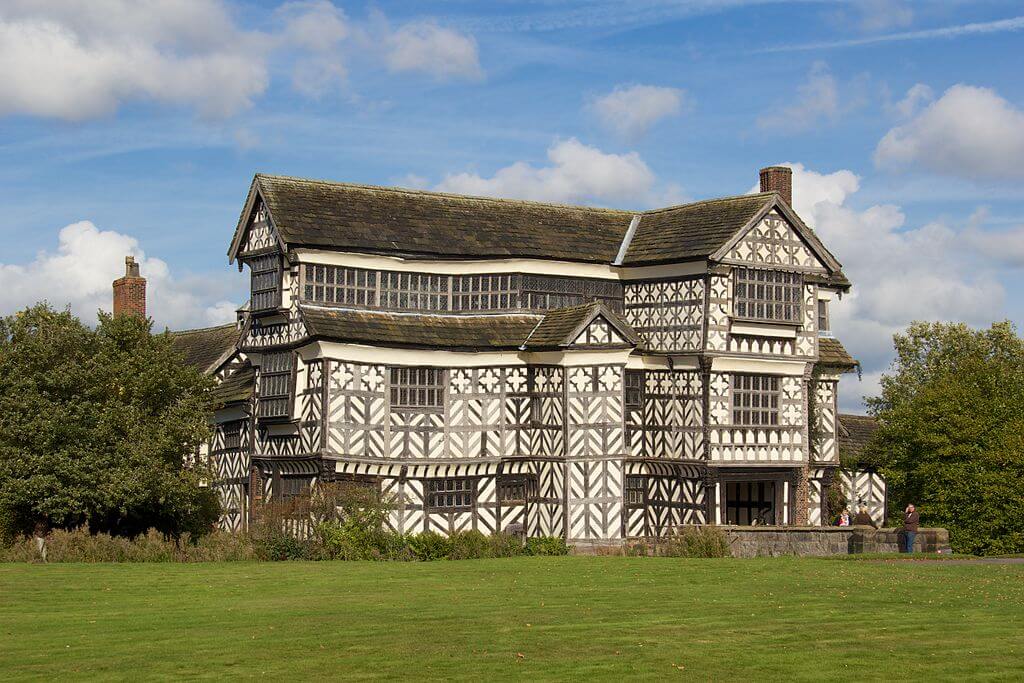
Little Moreton Hall is a moated half-timbered manor house that is also known as Old Moreton Hall. The oldest part of the manor house dates back to 1504 when the house was built for the wealthy landowner Charles Moreton.
The architecture of Little Moreton Hall is unusually with a top-heavy appearance due to the Long Gallery that runs the entire lenght of the south range’s upper floor.
The Moreton family owned the Hall for almost 450 years. But in 1938 the ownership was transferred to the National Trust, who open the house and garden (including a knot garden) for visitors.
Address: Newcastle Rd, Congleton
Gawsworth Hall
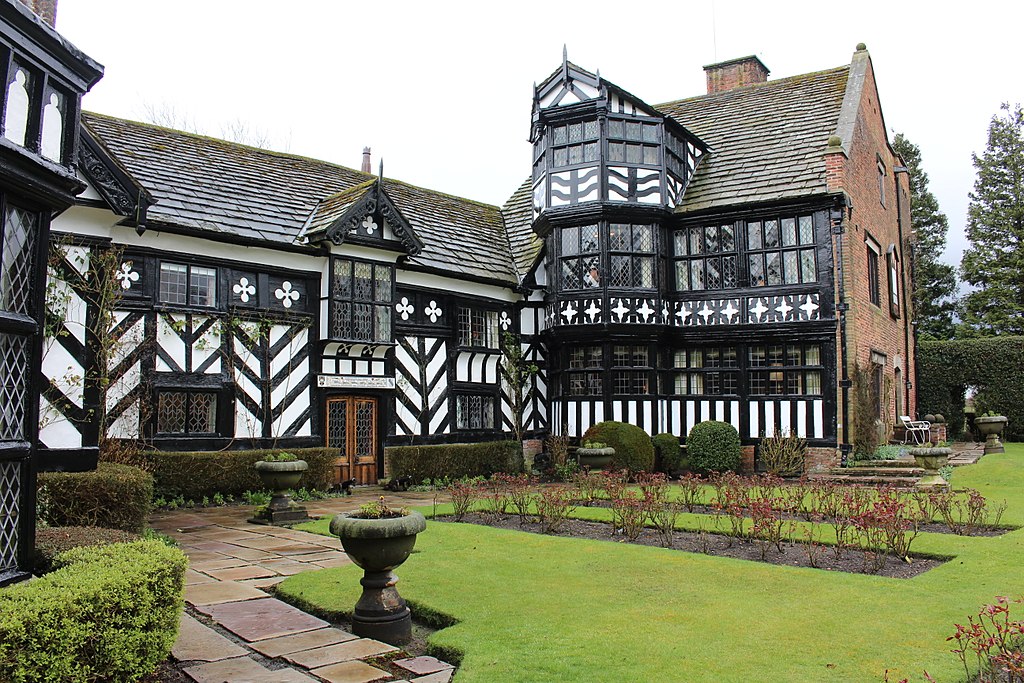
This Tudor manor house in Gawsworth, Macclesfield was built in the 15th and 16th-century. Mary Fitton, the “Dark Lady” of Shakespeare’s sonnets and maid of honour to Queen Elizabeth I lived at this Tudor manor house.
Surrounding the house are formal gardens and parkland. In the summer months these are used for open-air theatre and concerts.
Address: Church Ln, Gawsworth, Macclesfield
Biddulph Grange

It’s not the Victorian mansion that takes center stage at Biddulph Grange. But here it’s all about the Victorian gardens first developed by horticulturist and landowner James Bateman. The garden is divided into several themes and areas. Ranging from a Chinese garden to an Italian garden, and Egyptian garden.
In the 20th century the gardens awere decayed but the National Trust fully restored this wonderful garden which is now open for everyone to enjoy.
Address: Grange Rd, Biddulph, Stoke-on-Trent ST8 7SD
Astley Hall

Astley Hall is a 17th century country house in Chorley. The house, built around an Elizabethan courtyard, has Jacobethan plaster work ceilings and rare painted panelling, and fine English oak furniture..
In 1922 the house was given to Chorley Corporation by Reginald Tatton, as a memorial to the local men killed in World War I. Today the house is stil used as a museum.
The park, coach house and walled garden have recently been renovated.
Address: Astley Hall, Chorley PR7 1XA
Rufford Old Hall

Rufford Ol Hall was built in 1530 for Sir Robert Hesketh. Only the Great Hall of this 16th century house has survived. In 1661 a Jacobean wing was added to the house, followed by a third wing in the 1820s.
The house was owned by the Hesketh family until the 1930s afterwhich it was donated to the National Trust. Surrounding the house is a formal garden and woodland.
There are claims that William Shakespeare performed in the Great Hall.
Address: 200 Liverpool Rd, Rufford, Ormskirk L40 1SG
Turton Tower

Originally built as a stone tower in the Middle Ages, this tower gradually extended into a family home. The main extension was added in the 16th century. But alterations were also made in the 17th and 19th century.
For many years, the dining room was used as the council chamber and the drawing room as a committee room, and in 1952 the Tower was opened as a museum by Edward Stanley.
Address: Chapeltown Rd, Chapeltown, Bolton BL7 0HG
Smithills Hall

One of the oldest manor houses in North West England. Smithills’ origins date back to Medieval times but it has Tudor and Victorian wings. The estate also houses a Chapel built in 1520.
American author Nathanial Hawthorne also visited the Hall.
Address: Smithills Dean Rd, Bolton
Walton Hall & Gardens
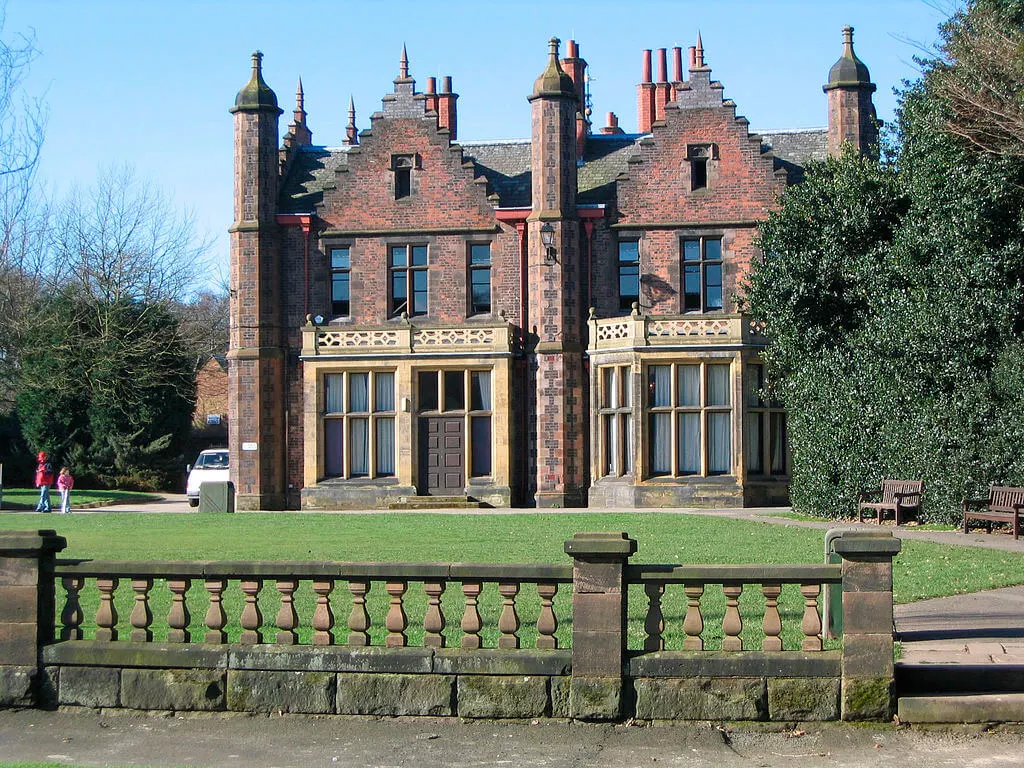
Walton Hall is a 19th century country house and former home of Lord and Lady Daresbury. Surrounding the house are acres of parkland that include a Zoo, adventure golf and a playground.
The hall with antique furnishings, Victorian paintings, an oak-panelled hall, grand staircase and high gilded ceilings can be rented for weddings.
Address: Walton Lea Rd, Higher Walton, Warrington WA4 6SN
Hall ’n th’ Wood

This early 16th century manor house was used as the house for the moiety of the Tonge with Haulgh township. The original bulding is timber framed and in 1591 and 1648 stone additions were added to the house.
English inventor Samual Compton lived at Hall ‘n th’ Wood and it is here that he designed and built the first spinning mule, which revolutionised the cotton industry.
Today the manor house is a museum with displays of 17th and early 18th century furniture, objects and artefacts. And where you can learn more about the life and work of Samuel Crompton.
Address: Green Way, off Crompton Way, Bolton
